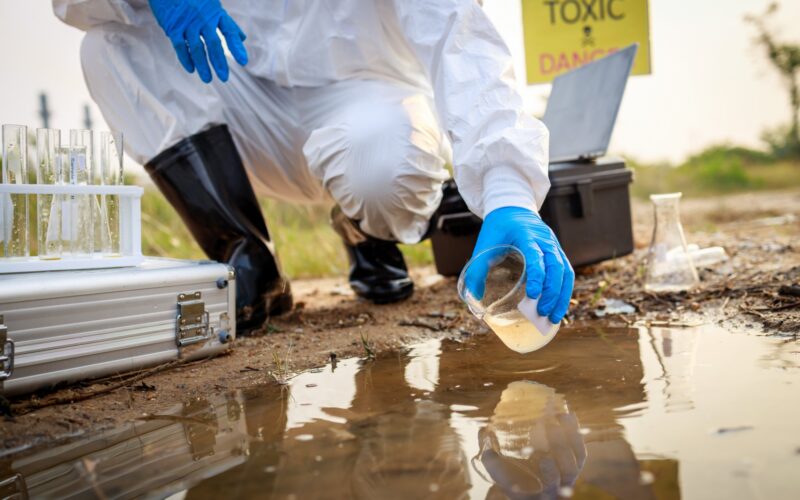How to remove Cyanide from wastewater ?
Cyanide is a highly toxic substance that poses severe risks to human health and the environment. It is commonly associated with industrial activities such as mining, metal processing, and chemical manufacturing. Cyanide contamination can occur through accidental spills or improper disposal, leading to detrimental effects on aquatic life and ecosystems.
Probiosphere employs innovative strategies to neutralize cyanide and mitigate its harmful effects. Our tailored solutions involve the use of specialized bacteria and enzymes that enzymatically breakdown cyanide compounds, transforming them into non-toxic substances. This approach ensures effective treatment, reducing the environmental impact and protecting both aquatic ecosystems and human well-being.
Cyanide: Neutralizing Toxic Threats
Reducing cyanide levels in wastewater is crucial for minimizing its environmental impact and safeguarding human health. Probiosphere offers effective solutions through a multi-step approach.
Firstly, implementing source control measures is vital to prevent cyanide from entering wastewater streams. This involves stringent handling and storage practises, enclosed systems for industrial activities involving cyanide, and robust spill prevention and response protocols. Additionally, pretreatment processes can significantly reduce cyanide levels before wastewater discharge. Chemical oxidation, pH adjustment, and precipitation techniques are commonly employed to convert cyanide into less toxic forms or remove it through the formation of insoluble precipitates.
Secondly, Probiosphere utilizes specialized bacteria and enzymes for biological treatment of cyanide-contaminated wastewater. These microorganisms possess the capability to enzymatically breakdown cyanide compounds, transforming them into harmless byproducts. For cases with higher cyanide levels or strict effluent standards, advanced treatment technologies like activated carbon adsorption, membrane filtration, or advanced oxidation processes can be employed. Regular monitoring and maintenance ensure optimal cyanide removal efficiency and the consistent performance of treatment systems.

Through these strategies, Probiosphere delivers comprehensive and sustainable solutions to reduce cyanide levels in wastewater, promoting a cleaner and safer environment for all.

Activities responsible for cyanide
Cyanide is primarily associated with various industrial activities and processes, making it a significant pollutant of concern. Industries such as mining, metal processing, chemical manufacturing, and electroplating are common sources of cyanide contamination. In mining operations, cyanide is often used for gold and silver extraction, leading to potential releases and accidental spills. Metal processing industries, such as steel production and galvanization, also contribute to cyanide pollution through the use of cyanide-based solutions for surface treatment and cleaning. Chemical manufacturing processes involving the synthesis or handling of cyanide compounds can result in cyanide discharges into wastewater systems.
Furthermore, certain agricultural practices, such as the use of cyanide-containing pesticides, can introduce cyanide into the environment. The presence of cyanide in wastewater poses significant risks to aquatic life, ecosystems, and human health, highlighting the importance of effective treatment and mitigation strategies.